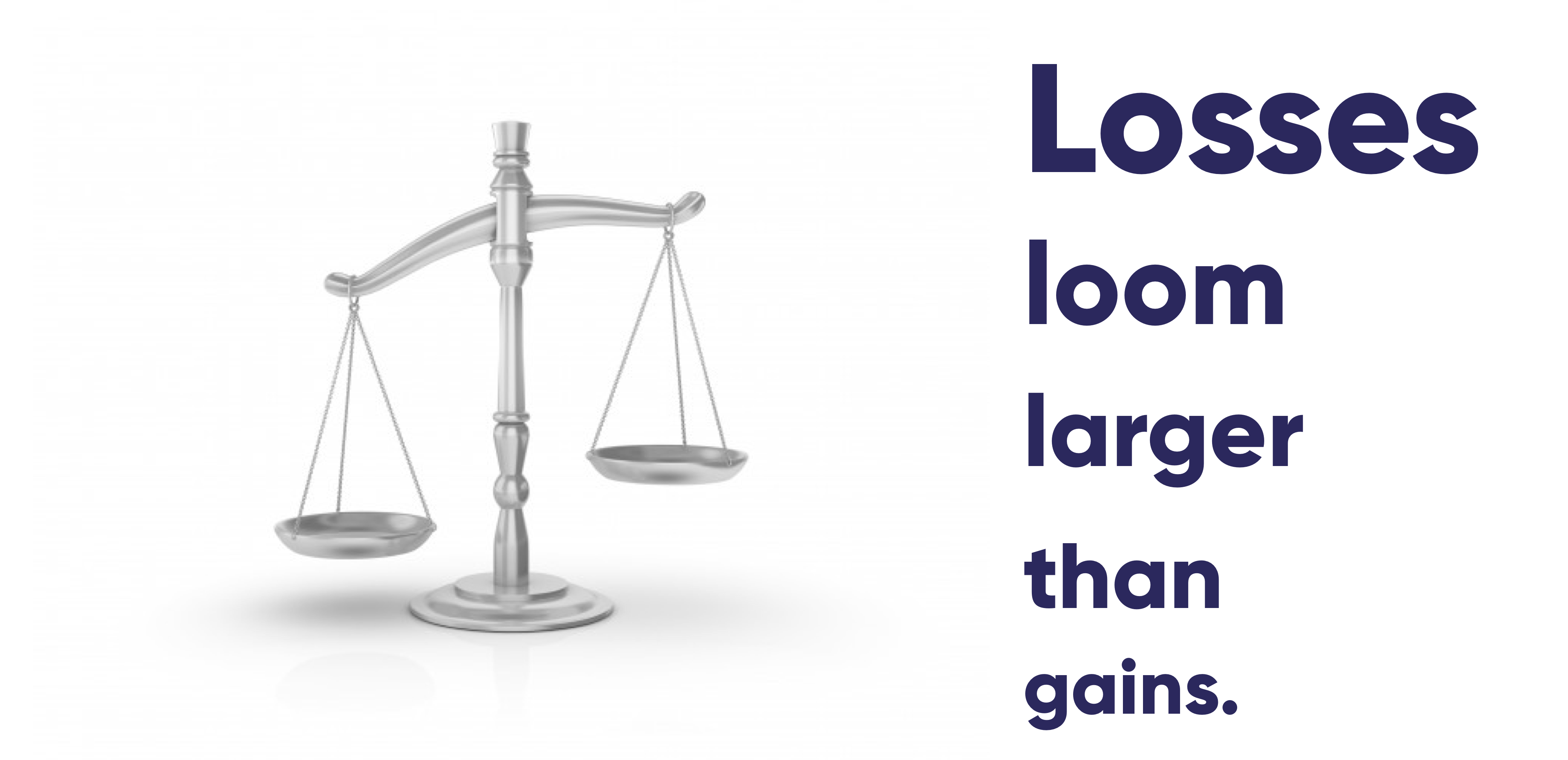How can businesses apply prospect theory to nudge customers
What is Prospect Theory?
Prospect theory considers the way people make choices involving risks, when the likelihood of possible outcomes is unknown. A major component of the theory is loss aversion, or the unhappiness associated with a loss. Simply put, studies have found that when we win £100 the magnitude of our gain in happiness is lower than the magnitude of the unhappiness we feel if we were to lose £100. Individuals, therefore, make choices based on their aversion to loss, acting irrationally compared to neoclassical economic standards.

What is the Endowment Effect?
When considering human biases, the prospect theory is illustrated with the endowment effect. This bias occurs when an individual feels ownership of an item. People tend to overvalue the items they own, regardless of the items’ market value. The endowment effect can be seen in various phenomena from life events such as political decisions, consumer purchases, even corporate strategies.
This feeling of ownership can happen instantly. This can be illustrated by an experiment by Kahneman and Loewenstein. They gifted half of a class of university students a pen while others were given a token redeemable for a gift. All participants were asked to rate the attractiveness of a pen and a chocolate bar as a gift. Those with the pen and those with the token did not rate the attractiveness of the pen differently. However, at the end all participants were given a choice between leaving the class with a pen or a chocolate bar. Surprisingly, those who had been given the pen chose to keep their pen by 56%, and those who had a token only preferred the pen by only 24%. This illustrated that the main effect of endowment is not that ownership increases the appeal of the good, but instead increases the pain to give it up.
How are companies applying this?
Here are a few examples how companies have increased their sales applying the endowment effect.
1. Free Trials
The free trial works to increase sales by allowing customers to feel ownership of an item before they purchase it. Traditionally, this has been a popular technique for online subscription services. However, It has recently been successfully applied in a new way for the online clothing shopping industry. Amazon has an offering called Prime Wardrobe where customers have the option to be shipped a box of clothing without paying, and can send back any items for free within 7 days. Potential customers receive their clothing items, however once they open their box the endowment effect occurs. The items of clothing shipped to their homes feel endowed, and the pain of giving up the item takes effect. They are much less likely to ship back any of the items, even though originally, they may have planned on trying on and only keeping one item. When shopping online, it is easier to take an item out of the virtual shopping cart than when customers have the pieces in their homes.
2. Money Back Guarantee
The money-back guarantee works similarly to the free-trial. However, this time customers purchase an item, reassured they would be able to return it. However, once they ‘own’ the item — they are less likely to want to give it up. The American car manufacturer Chrysler was one of the first companies to try out this offering. In 1980, Chrysler set up a 30-day 100% money back guarantee. At the time Chrysler had been in serious financial trouble with billions in debt. Later that year, they had turned around their sales numbers. The strategy of the money-back guarantee allowed for the company to continue and remain a major car seller today. It fostered sales as customers felt more willing to purchase a new car, and once they took the car home and drove it around, they were less likely to return it.
3. Handling Items in Store
There are other ways for customers to feel ownership over items to encourage higher sales. Simply by touching something, we feel more connected to it. Ever notice how large department stores like Selfridges or technology companies like Apple have large open tables with all of their wares available for consumers to pick them up and touch them? This is an effective way to increase sales — by getting customers to simply feel and hold an item increases their feeling of ownership. Again, once we feel endowment, we begin to fear loss. Therefore, simply by holding an item, we are more likely to want to purchase it.
Summary
The endowment effect has powerful implications for customer behavior. Companies can increase their overall sales employing this customer bias. Knowing key customer psychology can help increase company sales. As humans are very loss adverse, the pain of giving up an endowed item will be greater than the gain of money back.
References
Alton, L. (2017). A Look at the Benefits of Money-Back Guarantees in Modern Marketing. Retrieved from Entrepreneur website: https://www.entrepreneur.com/article/293330
Hal, B. (1980). Chrysler Guarantee Endures; Money-Back Plan Called A Success. New York Times. Retrieved from https://www.nytimes.com/1980/09/08/archives/company-news-chrysler-guarantee-endures-moneyback-plan-called-a.html?searchResultPosition=2